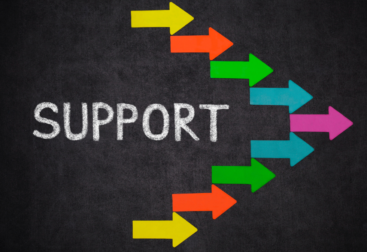Leaders often focus on strategy, innovation, and growth—and rightly so, as these are the engines of enterprise. However, navigating periods of profound uncertainty—whether an economic downturn that reshapes industries or a global shift that alters how we work and live—reveals that the true bedrock of sustained success lies elsewhere: in the resilience of an organization’s culture.
A resilient culture isn’t merely about bouncing back; it’s about the inherent capacity of an organization to absorb shocks, adapt, and emerge stronger. It’s about people, trust, and shared purpose. When the external environment is unpredictable, the internal environment must be unshakably strong.
So, how can organizations intentionally build and nurture this crucial strength? Here are some proven strategies to foster adaptability and strength within any organization during challenging times.
1. Transparency as a Cornerstone, Not an Option
During times of uncertainty, the rumour mill works overtime. Silence breeds speculation, which in turn breeds fear and disengagement. A key approach to countering this is to prioritize radical transparency. This doesn’t mean sharing every single detail, but it does mean being honest about the challenges, the uncertainties, and the potential impact.
- Regular, Direct Communication: Hold town halls, send candid emails, and encourage direct Q&A sessions. Don’t wait for things to be perfect; communicate progress, even if it’s incremental.
- Explain the “Why”: When difficult decisions are made (e.g., budget cuts, strategic pivots), explain the rationale clearly. Help teams understand the bigger picture and the path forward.
- Acknowledge the Human Element: It’s vital to acknowledge the difficulty of the situation. Leaders must show they understand and empathize with their team’s concerns.
2. Empowering Autonomy and Distributed Leadership
In a crisis, the instinct might be to centralize control. However, true resilience flourishes when teams are empowered to act. Decision-making needs to be pushed closer to the problem.
- Define Clear Guardrails, Then Trust: Provide clear objectives and boundaries, then give teams the autonomy to find solutions. Micro-management stifles innovation and slows down adaptation.
- Cultivate Front-Line Insights: The people closest to the customers or the operational challenges often have the best solutions. Create channels for their insights to flow directly to decision-makers.
- Develop Leaders at Every Level: Invest in leadership training that focuses on adaptability, problem-solving, and emotional intelligence for managers across the organization.
3. Prioritizing Empathy and Well-being
Economic downturns and global shifts bring immense personal stress. A resilient culture must be one that genuinely cares for its people. Ignoring employee well-being is a recipe for burnout and attrition.
- Listen Actively: Implement feedback mechanisms – surveys, open forums, one-on-one check-ins – to understand what employees are truly going through.
- Support Mental Health: Offer resources, promote work-life integration (not just balance), and encourage breaks. Leaders should set an example in prioritizing well-being.
- Flexibility Where Possible: Adapt work models (remote, hybrid, flexible hours) to support employee needs where business demands allow. This shows trust and respect.
4. Fostering a Culture of Continuous Learning and Adaptation
The world doesn’t stop changing when things get tough. A resilient organization views challenges as opportunities to learn and evolve.
- Embrace a Growth Mindset: Encourage experimentation, learning from failures, and celebrating rapid iteration.
- Invest in Skilling/Reskilling: Identify critical new skills needed for the evolving landscape and provide resources for employees to acquire them. This signals a commitment to their future.
- Regular Retrospectives: After a project, a quarter, or a challenging period, dedicate time to reflect: What worked? What didn’t? What was learned? How can it be applied going forward?
5. Grounding Decisions in Shared Values
When the ground feels shaky, an organization’s core values become the anchors. They provide a moral compass for difficult decisions and reinforce what the company stands for.
- Reiterate and Live Your Values: Don’t just list them on a wall. Discuss them in meetings, highlight behaviours that embody them, and ensure leadership truly lives them.
- Values-Based Decision Making: When faced with a tough choice, explicitly ask: “Does this align with our values?” This provides clarity and consistency.
- Celebrate Values-Driven Actions: Recognize and reward employees who exemplify the core values, especially during challenging times.
The Takeaway: Building for the Long Haul
Building a resilient culture is not a reactive measure; it’s a continuous, proactive investment. It’s about designing an organization that not only withstands storms but grows stronger because of them. When organizations prioritize transparency, empower their teams, lead with empathy, foster continuous learning, and root themselves in their values, they create an ecosystem where adaptability is innate, and strength becomes a defining characteristic.











